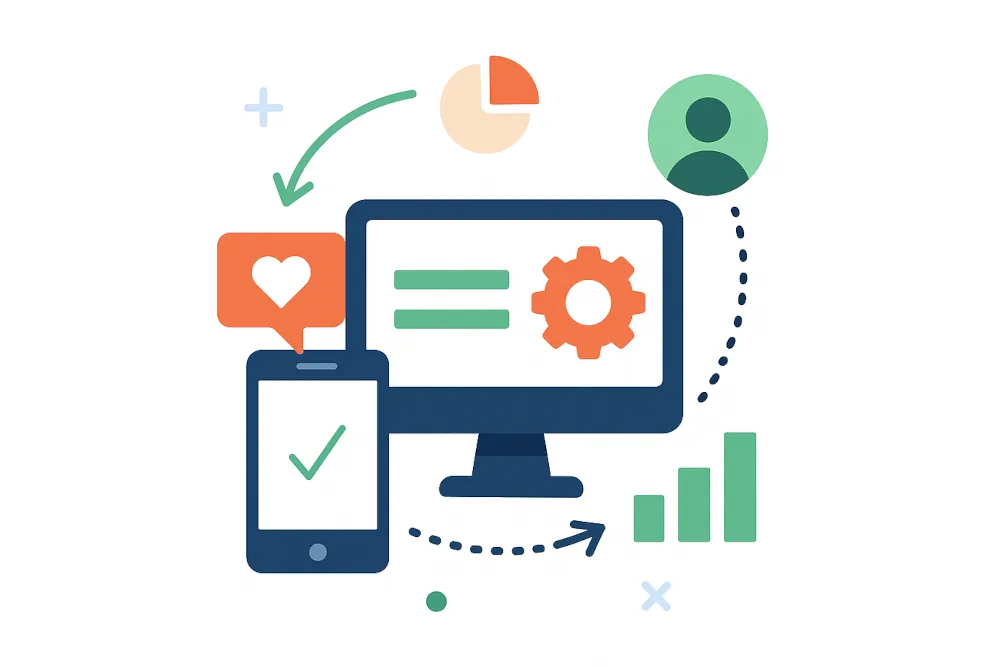Automation Strategy Sprint (4–6 weeks)
Our Automation Strategy Sprint helps you design, test, and launch high-impact automation in 4–6 weeks – journeys, segments, and A/B tests with measurable uplift
Typical response: 1-2 business days.

Who is it for?
Typical early impact (illustrative):
Recovered orders: +3-6 percentage-point (cart recovery)
CTR uplift: +8-15% (re-engagement flows)
Automated-audience coverage: +10-20% (within 4-6 weeks)
Illustrative – results vary by traffic volume and data quality.
Problems we solve
How we work
In our Automation Strategy Sprint (4-6 weeks) we go from audit to live customer journeys. We start small, ship fast, and iterate on what measurably lifts conversions.
WEEK 1
Diagnosis & focus
Audit of journeys, channels, and data; select 2–3 high-potential scenarios.
WEEK 2
Design & prep
Journey mapping; segments and triggers; copy & templates; A/B testing framework.
WEEKS 3-4
Build & pilot
Launch 2-3 flows, measurement, and a lean performance dashboard.
WEEKS 5-6
Optimize & plan
A/B iterations on message, timing, and channel; a 90-day growth plan.
What you get (deliverables)
With this automation strategy sprint you leave with live customer journeys, reusable templates, a lean KPI dashboard, and a 90-day plan — fully documented and owned by your team.
Deliverables you keep (and own):
Mini-case: Cart recovery
Steps
Re-engage customers in four steps:
step 1 – Send an in-app message at 30 minutes to prompt return.
step 2 – Send an email at 22 hours with product context.
step 3 – Send an SMS on day 3 after the abandoned cart.
step 4 – If no purchase, follow up on day 5 with a limited-time discount code.
Expected impact
In practice, early deployments often see a +3-6 pp (percentage points) uplift in recovered orders when traffic is steady and data quality is reliable. Results vary; A/B-test discount size and validity to avoid “wait-for-sale” behavior.
Typical response: 1-2 business days.
Frequently Asked Questions
Still have questions?
Can’t find the answer you need?
Tell us about your business and goals — we’ll suggest the fastest path to impact.
Learn More
Multi-channel messaging – the platform
Customer engagement automation – how it works
Use cases: cart recovery